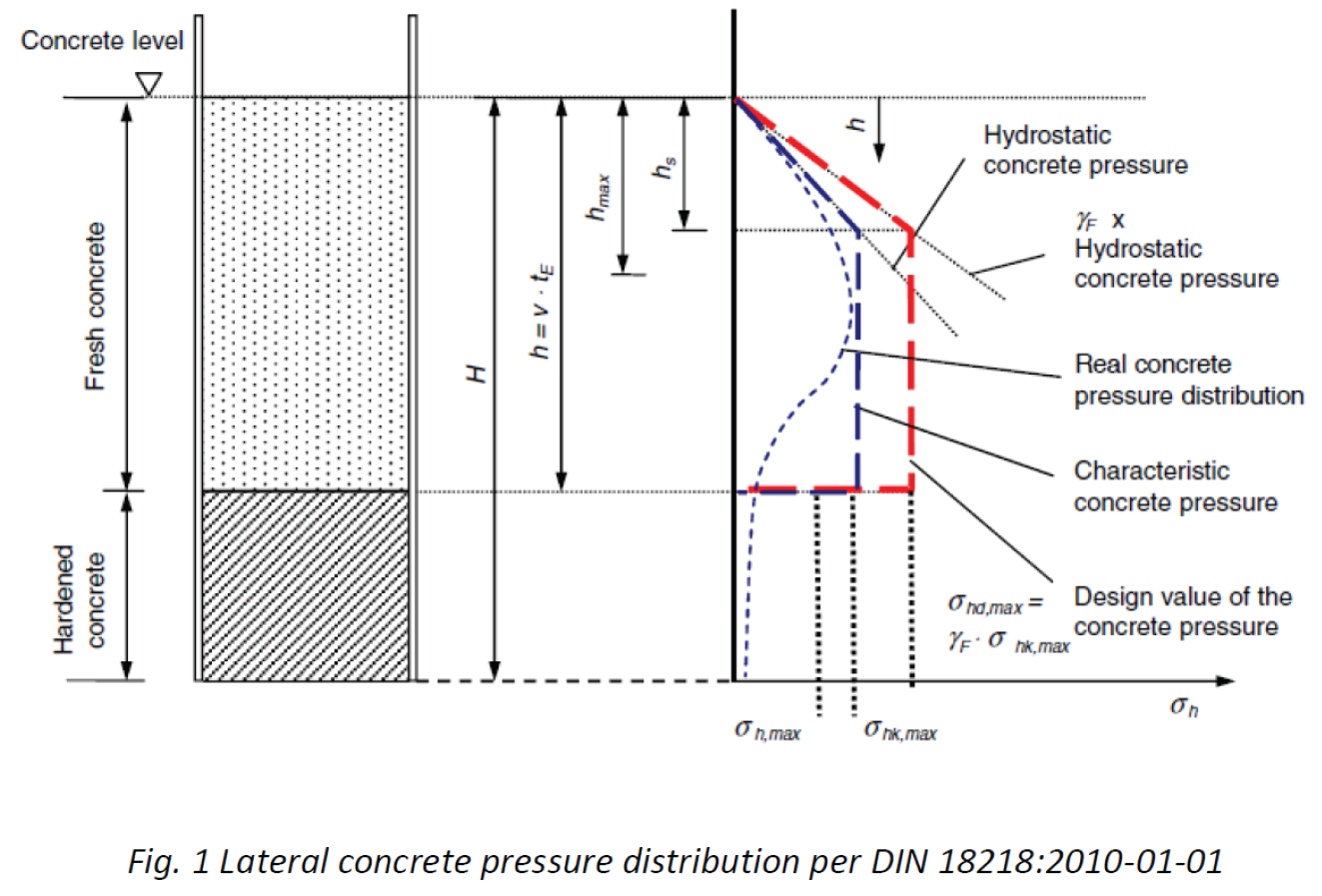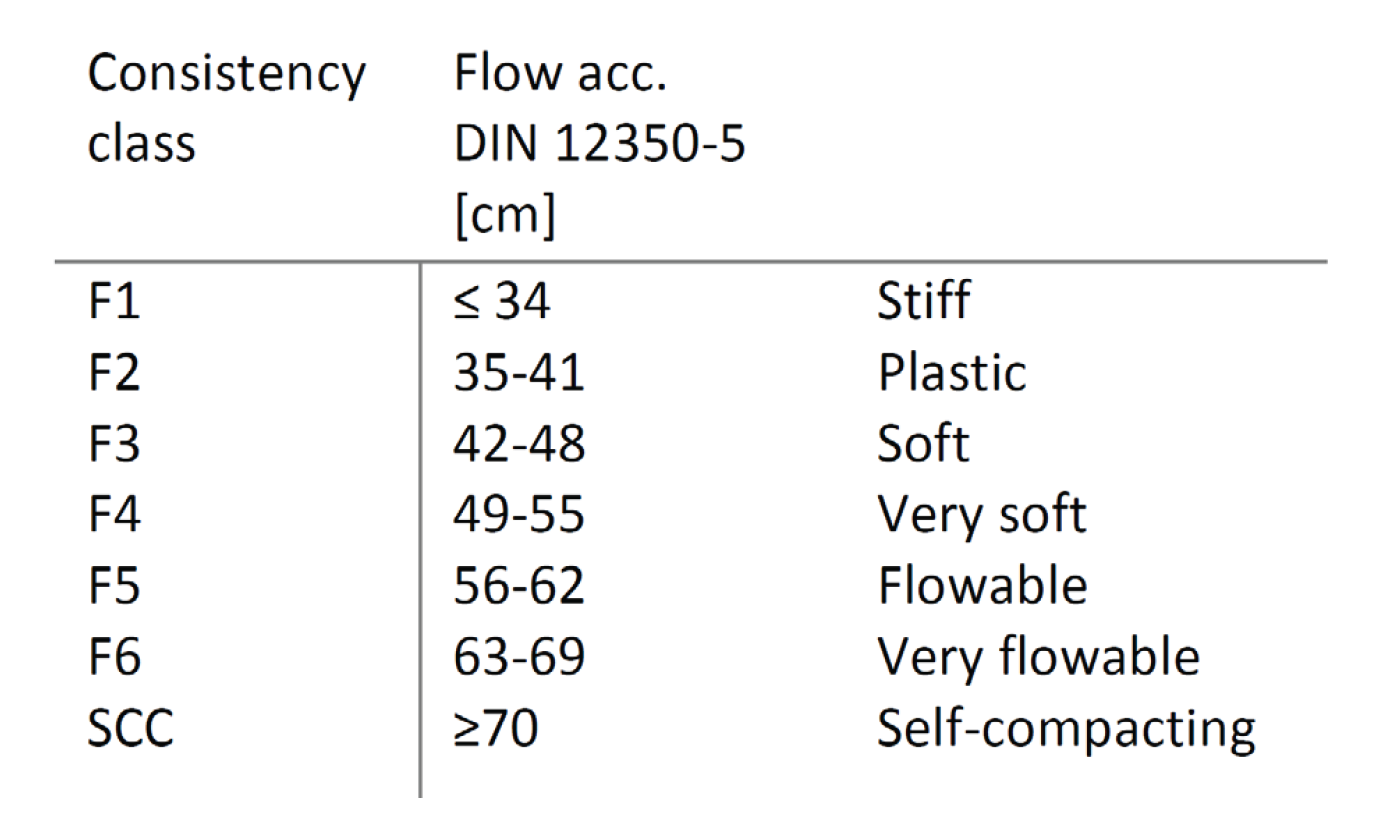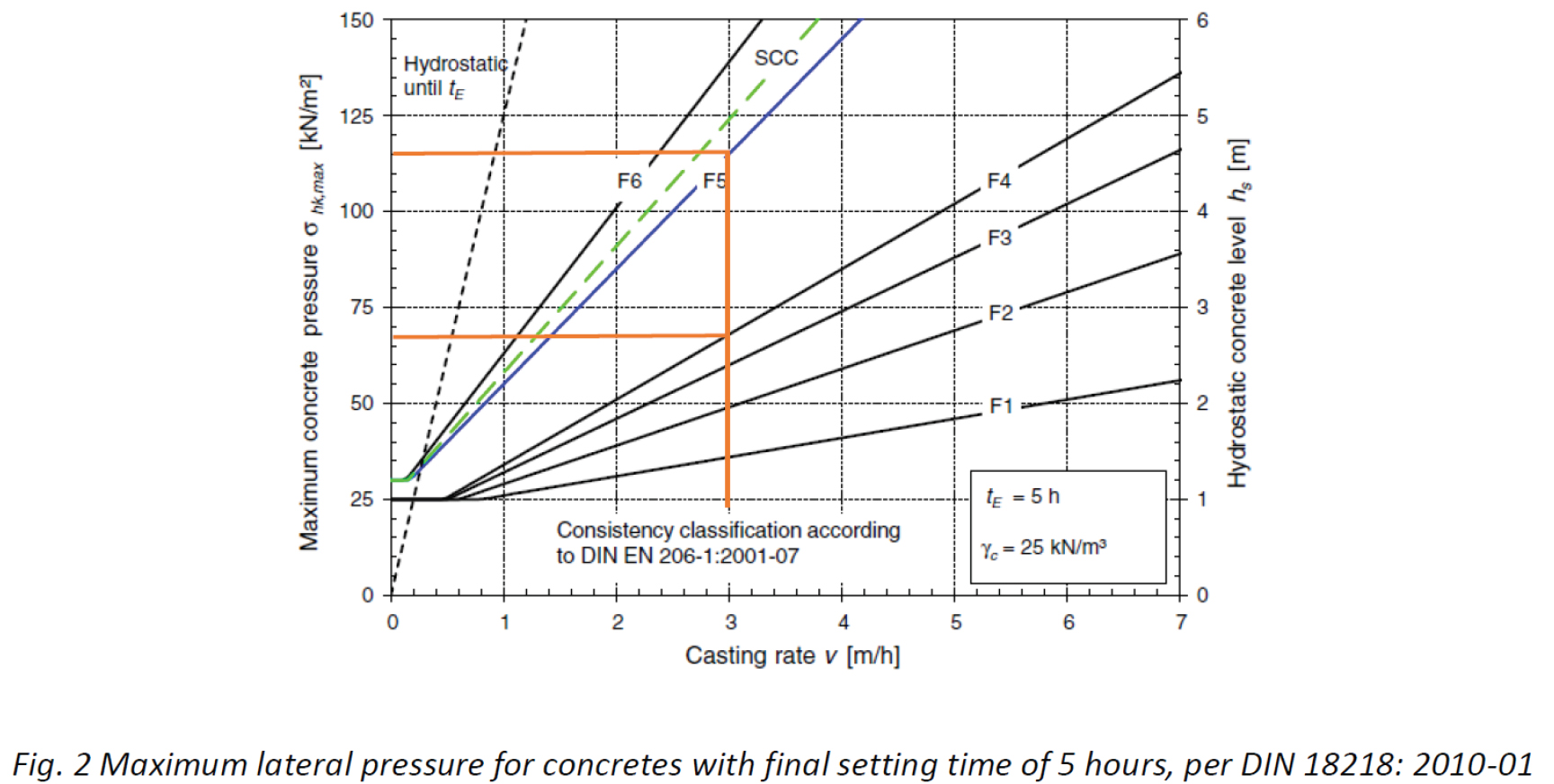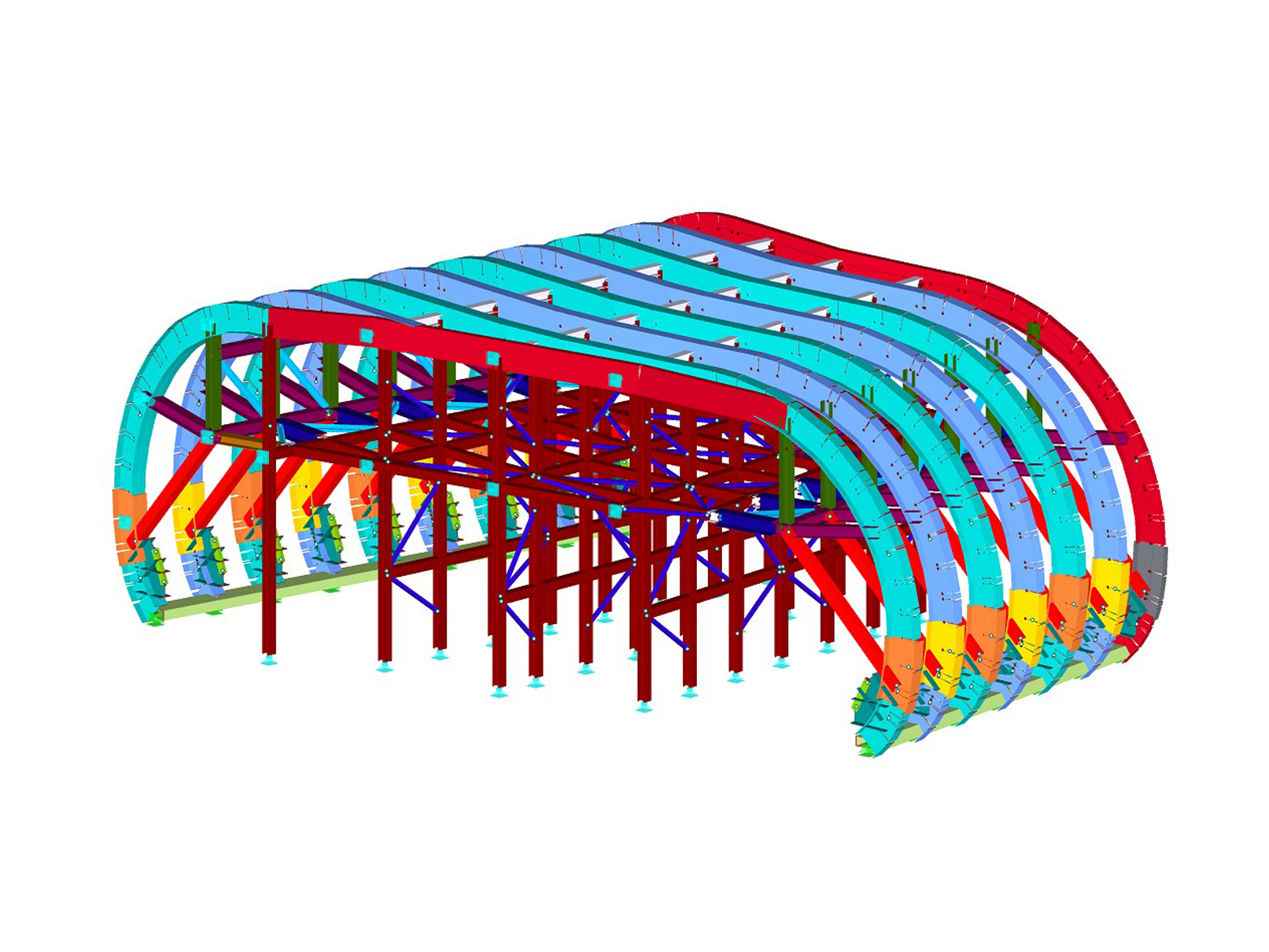18.07.2017 /
The crucial role played by the concrete in the formwork design
The concrete type represents one of the principal factors to take into account for a formwork design. The mix design and the cycle of work have to be considered at early stage to ensure safely designed and cost-effective formwork systems.
Formworks are temporary structures i.e. system to support permanent construction works and give shape to fresh concrete while it sets. They are used to cast inner rings of tunnel, walls, slabs, ecc. Despite the notion of temporary structures, formworks require a detailed and specific design, due to the high loads involved. To prevent any risk, for the workers and for the final result, formwork should be designed for the ultimate as well for the serviceability limit states. The formwork must withstand several loads such as dead loads (self-weight of the structure), live loads, fresh concrete pressure and in some cases wind and snow loads.
The most significant load, especially for a tunnel shutter, is represented by the concrete pressure. When the concrete is placed, it exerts a horizontal pressure against the surface of the formwork. This pressure is comparable, at least in the first stage, to the pressure that the water exerts against the wall of a basin. In the case of water, the pressure rises with 10kN/m2 each meter of depth according to the hydrostatic law:
Where:
P is the hydrostatic pressure
ρ is the density of the material
g is the gravitational acceleration
h is the depth
The pressure exerted by the concrete is however two and a half time higher than the one exerted by the water, because the concrete density (γ=ρ*g ) is equal to 25kN/m3, compared to the 10kN/m3 of the water. However, the concrete is fluid only at earl stage of the pour; it starts the bounding process usually when the casting is still underway. When the cement and water chemically react, the concrete starts gaining a certain strength and it can carry part of the weight of the concrete above. This gives rise to a lower pressure acting on the layers below.
Several studies and methods have been developed to predict the lateral pressure of the concrete. However, all these methods assume that concrete pressure increases linearly with depth to a maximum value and remains constant thereafter. The value of the lateral concrete pressure is regulated by different standards; in the European countries the most used is the German standard DIN 18218:2010-01. According to this regulation, the pressure of the fresh concrete is hydrostatic, so it increases proportionally with the depth, until the maximum characteristic pressure σhk,max and the respectively height hs is reached. Below this level, the pressure is considered constant, so an increasing of the depth does not more imply an increasing of the pressure.
After a certain time (indicated with tE in the Standards), however the concrete starts setting, and consequently the lateral pressure can be neglected.
The concrete behavior is so represented in a conservative way, considering a bilinear distribution of the pressure; triangular load distribution up to the depth h= hs and then constant up to h= hE. This is a simplified scheme; it takes into account only three variables: setting time tE, casting rate v and concrete consistency class. In reality other factors, such as coarse aggregate concentration, aggregate nominal size, concrete temperature, smoothness and permeability of the formwork material, size and shape of the formwork can modify the pressure distribution. However, for a matter of simplicity, all these additional parameters are neglected by the codes due to their not significate impact on the final load evaluation.
In the diagram is also shown the design maximum pressure, indicated with σhd, max (red line), that represents the maximum concrete pressure multiplied for a partial safety factor coefficient γF, to take into account the variations in the parameters and the uncertainties of the model.

The consistency classes are based on spread values determined per DIN 12350-5 according to the slump-flow test. The classes vary from the stiff F1 to the very flowable F6, up to the self-consolidating concrete (SCC).

As stated previously, the maximum lateral pressure of the concrete, according to DIN 18218:2010-01, is defined considering the rate of placement, the specific concrete weight as well as the stiffening and the setting of concrete, according to the diagram below.
The consistency class plays a crucial role in the maximum pressure definition: as an example if we consider a rate of placement of 3m/h the maximum pressure exerted by an F4 concrete is around 65kN/m2; while with an F5 it is 115kN/m2. The shutter must be designed properly in order to ensure that the loads are carried safely with minimum deformations. From this it is easy to understand how the concrete type and quality can impact on the dimensions of the formwork and consequently on its costs.

As a result of the developments in concrete technology and construction processes in the last years, the times required to complete a pour are always more and more challenging. The rate of placement of concrete are always higher, up to hydrostatic pressures, and the concrete more flowable than in the past. This means higher loads acting of the formworks and consequently a bigger importance must be given to its design. It must be noted that, despite formworks are temporary structures, they affect the safety of the workers and the final result. To avoid loss of time and money for the job site, formworks require the same level of Engineering required for permanent structures.
KERN joining BAUMA 2025 with PERI
10.02.2025 / News
TELT LyonTurin - Successful FAT of the Invert Formwork
24.01.2025 / News
KERN Service Dismantling Gantry
03.12.2024 / News
Ongoing works at the RBS Tunnel Project in Bern
25.10.2024 / News
Successful Milestone Reached at Gubrist
11.10.2024 / News




